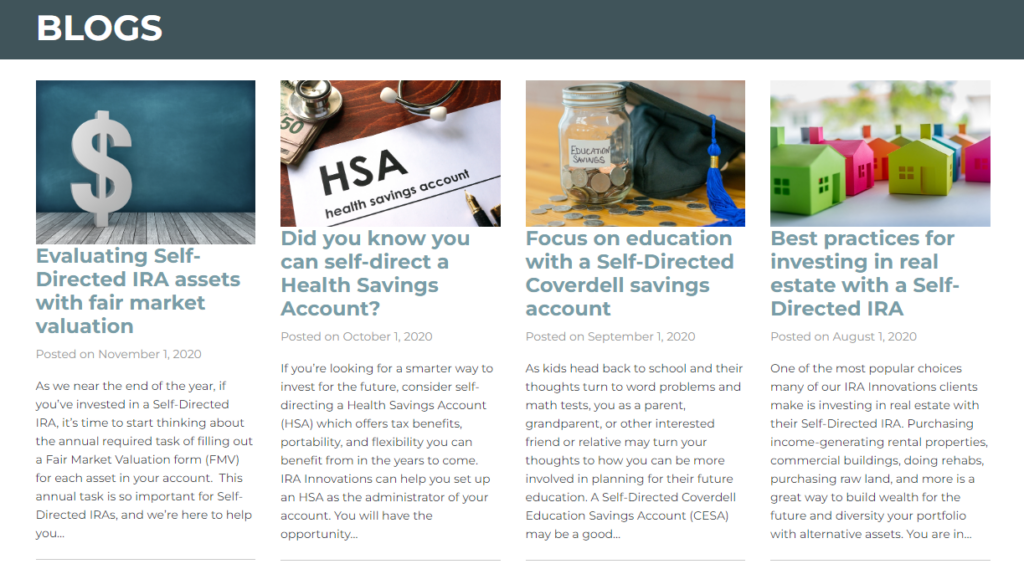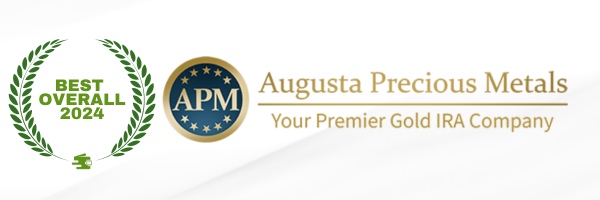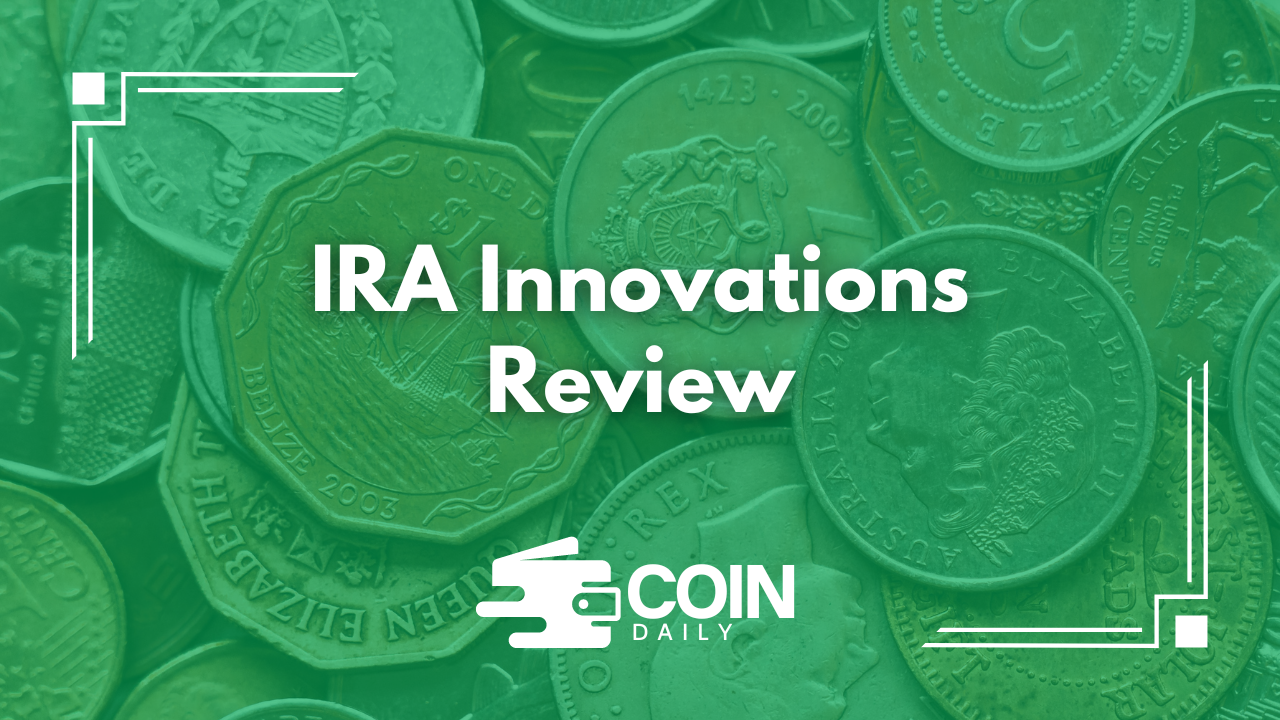In today’s dynamic financial landscape, I recognize that understanding the options for retirement savings is essential. IRA Innovations provides a variety of Individual Retirement Account (IRA) solutions tailored to meet diverse investment needs.
This article will delve into what IRA Innovations is, how it operates, and the various types of IRA accounts available, including Traditional, Roth, SEP, and SIMPLE IRAs.
I will also address the benefits, associated fees, potential risks, and the steps involved in opening an account. This information will serve to enhance your retirement planning strategies.

What is IRA Innovations?
IRA Innovations embodies my commitment to a modern approach in managing Individual Retirement Accounts (IRAs), emphasizing unique investment strategies that are relevant to today’s financial environment.
As retirement planning grows more complex, I recognize the increasing demand for innovative financial services that provide tax advantages and diversified investment options. This evolution in retirement accounts is designed to equip individuals with the necessary tools to secure their financial future and enhance their investment potential.
How Does IRA Innovations Work?
They operate IRA Innovations by leveraging a diverse range of investment vehicles to enhance individual retirement accounts, focusing on optimizing both the custodianship and management of assets.
By implementing effective contribution strategies and ensuring compliance with regulatory requirements, they enable investors to benefit from tax-deferred growth, allowing their portfolios to thrive over time.
What Are the Different Types of IRA Accounts Offered by IRA Innovations?
At IRA Innovations, they offer a diverse range of Individual Retirement Account types designed to meet various financial needs and retirement objectives.
It is essential for individuals to understand the differences between traditional IRA, Roth IRA, SEP IRA, SIMPLE IRA, and self-directed IRA options in order to effectively tailor their retirement savings strategy.
1. Traditional IRA
A Traditional IRA serves as a tax-advantaged retirement savings account that enables me to contribute pre-tax income, providing immediate tax benefits and the potential for growth through tax-deferred investments. This account is especially beneficial for those looking to reduce their taxable income in the year I make contributions.
As of 2023, the contribution limits are set at $6,500 for individuals under 50 and $7,500 for those aged 50 and over, making it a strong foundation for building a secure retirement fund. The tax benefits I can enjoy include deductions from taxable income, allowing my funds to grow without immediate tax implications until I withdraw them during retirement.
Eligibility requirements vary based on factors such as income and tax filing status; however, generally, anyone with earned income can open and contribute to a Traditional IRA. This strategy not only helps me secure financial stability in retirement but also complements a broader investment strategy that may involve diverse asset classes to enhance my overall financial growth.
2. Roth IRA
A Roth IRA is an innovative retirement account that enables me to make after-tax contributions while enjoying tax-free growth on my investments, making it a powerful tool for long-term savings. This account is particularly advantageous for younger investors like myself, who anticipate being in a higher tax bracket during retirement.
Along with the tax-free growth, a Roth IRA has specific eligibility requirements, ensuring that individuals within certain income thresholds can take full advantage of its benefits. Contribution limits for this account vary based on age, and there are catch-up contributions available for those over 50, which enhances our retirement savings potential.
One of the most compelling benefits of a Roth IRA is the opportunity for tax-free withdrawals in retirement, allowing me to access my funds without the burden of taxes. Understanding these tax implications is essential, particularly when I compare it to traditional IRAs, which operate under different tax conditions and withdrawal rules. This understanding ultimately influences my long-term financial planning.
3. SEP IRA
A SEP IRA, or Simplified Employee Pension IRA, is tailored specifically for self-employed individuals and small business owners, offering significantly higher contribution limits compared to traditional IRAs. This account provides me with a tax-efficient way to save for retirement while also extending benefits to my employees.
The annual contribution limit can reach as high as 25% of compensation, with a maximum amount that is adjusted each year, making it an excellent option for enhancing my retirement savings. The eligibility criteria are quite broad, allowing me to establish a SEP IRA for all eligible employees, thereby simplifying the process of providing retirement benefits.
This flexible structure not only aids in effective financial planning but also promotes sound investment strategies, supporting long-term growth. By adopting a SEP IRA, I can secure a more stable financial future for myself and my business while also fostering employee satisfaction and retention.
4. SIMPLE IRA
The SIMPLE IRA, or Savings Incentive Match Plan for Employees, is a retirement plan specifically designed for small businesses that allows both employer and employee contributions, making it an accessible option for incentivizing retirement savings. I find that the matching contributions from employers can significantly enhance an employee’s retirement portfolio.
With its straightforward structure, this plan enables employees to contribute up to a certain limit annually, which the IRS sets each year. On the employer side, there are flexible contribution requirements, including the option to either match employee contributions up to a specified percentage or make a non-elective contribution for all eligible employees.
This approach not only fosters a team-oriented culture around retirement savings but also presents itself as a more manageable option for small business owners compared to more complex retirement plans like 401(k)s. Therefore, I view the SIMPLE IRA as a viable and beneficial solution, allowing small businesses to offer competitive savings opportunities without overwhelming administrative burdens.
What Are the Benefits of Using IRA Innovations?
Utilizing IRA Innovations offers numerous benefits that significantly enhance my financial security and retirement planning. The tax advantages linked to various IRA types, combined with the opportunity to diversify investments across multiple asset classes, enable me to align my financial strategies with my long-term retirement objectives effectively.
1. Tax Advantages
One of the primary benefits of IRA Innovations is the tax advantages they provide, which can significantly enhance my retirement savings strategy. With options for tax-deferred growth and the potential for tax-free withdrawals, I can maximize the effectiveness of my contributions.
For example, by choosing a Traditional IRA, I can benefit from immediate tax deductions on my contributions, effectively reducing my taxable income for the year. On the other hand, a Roth IRA offers an invaluable opportunity for tax-free growth, allowing me to withdraw funds in retirement without facing tax implications.
Understanding the nuances between these two types of IRAs is essential for shaping my retirement income, as each offers distinct advantages that can lead to substantial savings over time. Staying aware of both short-term and long-term tax implications is crucial for anyone looking to fully leverage the potential of their retirement portfolios.
2. Diversification of Investments
I believe that diversification of investments is a cornerstone of a successful retirement portfolio, and IRA Innovations provide access to a wide range of asset classes. This includes stocks, bonds, mutual funds, annuities, and more, which enables me to create a balanced portfolio that can withstand market volatility.
By employing various investment strategies and asset allocation techniques, I can effectively spread my risk and enhance my potential for long-term growth. This approach not only mitigates the impact of poor performance in any single asset class but also allows me to make opportunistic adjustments in response to market trends.

For instance, blending traditional investments with alternative assets like real estate or commodities can provide additional layers of security. The flexibility offered by IRA Innovations allows me to tailor my portfolio according to my unique financial goals, ensuring that my retirement plans remain robust and adaptable in an ever-changing economic landscape.
3. Flexibility in Investment Choices
The flexibility in investment choices provided by IRA Innovations enables me to tailor my retirement portfolio to align with my personal risk tolerance and financial goals. With options such as a self-directed IRA, I have the opportunity to take control of my investment strategies, allowing me to explore unique financial products that go beyond traditional offerings.
This approach enables me to venture into alternative assets, including real estate, private equity, and commodities, which can enhance potential returns and diversify my holdings. By carefully assessing the risks associated with these investments, I can make informed decisions that align with my financial objectives.
A comprehensive risk assessment not only helps me identify opportunities but also aids in mitigating potential downsides. Ultimately, this guides me toward choices that complement my long-term retirement strategy while fostering financial growth.
What Are the Fees Associated with IRA Innovations?
When evaluating IRA Innovations, I find it crucial to understand the fees associated with managing these accounts, as they can significantly impact overall investment returns.
From account setup and maintenance fees to investment and transaction fees, having a clear understanding of these costs is essential for effective financial planning.
1. Account Setup and Maintenance Fees
I consider account setup and maintenance fees to be important costs associated with IRA Innovations that I need to evaluate when planning my retirement accounts. Understanding these fees enables me to select financial services that align with my investment strategies and long-term goals.
For example, if I start with a modest initial deposit, I realize that high account maintenance fees can significantly erode my returns over time, particularly if my portfolio’s growth is slow. On the other hand, choosing a provider with lower fees may allow for greater capital growth, ultimately enhancing my financial health. Since these fees can vary widely among financial services providers, it is essential for me to compare options thoroughly.
By carefully examining not just the fees but also the services included, I can avoid unexpected costs that could detract from my overall investment performance.
2. Investment Fees
Investment fees are a critical component to consider when evaluating IRA Innovations, as they directly impact fund performance and overall investment returns. These fees can vary depending on the types of financial products chosen and the associated management expenses.
For example, expense ratios are a common fee structure that indicates the percentage of a fund’s assets allocated to its operation, which includes administrative costs. Management fees, on the other hand, are charged by investment firms for overseeing and managing the funds in which I invest.
Over time, even seemingly minor fees can erode investment performance, significantly diminishing the growth of assets in a retirement account. Therefore, understanding these costs is essential not only for optimizing returns but also for ensuring that individuals make the most informed decisions about how their savings will perform as they prepare for retirement.
3. Transaction Fees
Transaction fees are costs I incur when buying or selling investments within IRA Innovations, making it essential for me to factor these into my overall portfolio management strategy. Understanding trading costs allows me to optimize my investment choices and maximize my returns.
These fees, which are often overlooked, can accumulate significantly over time and impact the total gains from my investments. For instance, engaging in frequent trading can lead to higher fees, ultimately diminishing profits that could otherwise benefit from compounding over the years.
I remain vigilant about my trading habits and consider alternative strategies to lower these costs. By utilizing commission-free trading platforms, consolidating trades, and focusing on long-term investments rather than short-term gains, I can effectively reduce transaction fees.
By being proactive and informed about my investment strategies, I can make more efficient decisions that ultimately lead to improved financial outcomes.
Below are the top IRA Innovations alternatives:
Check Out the Best Gold IRA Company of 2024
There are over 200+ gold IRA companies in the US and among all of them, I believe Augusta Precious Metals is the best one so far.

Augusta Precious Metals ranks as the #1 gold IRA company in the US. And that’s for good reason.
They have some of the best product catalogs with gold, silver, platinum, and palladium products to offer. But the main highlight is their dedicated web conference and the added focus on client education.
Augusta has an A+ rating on BBB, 1000+ client testimonials, and has been awarded “Most Transparent Company” in 2023 by Investopedia.
No other company puts as much focus on educating their clients about the different aspects of gold IRAs as they do.
My own experience with them was amazing to say the least.
However, their minimum investment requirement is $50,000 which limits the number of people who can open a gold IRA with them. Still, if you have the budget, you shouldn’t look elsewhere.
What Are the Risks of Using IRA Innovations?
While I recognize that IRA Innovations provide numerous advantages, it is essential to acknowledge the inherent risks associated with these accounts, including market volatility and investment risks.
Furthermore, understanding the potential penalties related to early withdrawals is crucial for any investor aiming for a secure retirement.
1. Market Volatility
I recognize that market volatility can significantly impact the performance of investments within IRA Innovations, as fluctuations in the economy often lead to unpredictable returns. Understanding these economic trends is essential for making informed investment decisions.
When I examine different asset classes such as stocks, bonds, and real estate, it becomes evident that each reacts differently to market changes. For instance, while equities may experience declines during a downturn, fixed-income investments typically provide a safe haven for those seeking stability.
To mitigate these inherent risks, I find that implementing a diversified investment strategy is crucial. By allocating assets across multiple classes, I can shield my portfolio from extreme volatility. This proactive approach not only helps balance potential losses but also enhances opportunities for growth, allowing me to adapt effectively to market shifts.
2. Investment Risk
Investment risk is a critical aspect I consider when managing IRA Innovations, as different investment strategies come with varying levels of risk. Evaluating my risk tolerance is essential for establishing a successful retirement savings plan.
This process requires me to understand how much volatility I can comfortably endure while also identifying the types of assets that align with my financial goals and psychological comfort. By balancing conservative and aggressive investment options, I can tailor a portfolio that not only acknowledges potential market fluctuations but also aims to maximize returns over time.
Utilizing the tools and resources provided by IRA Innovations, I can assess my risk tolerance through questionnaires and discussions with financial advisors. This ensures that I take a well-informed approach that aligns my investment choices with my overall retirement objectives.
3. Early Withdrawal Penalties
I recognize that early withdrawal penalties pose a significant risk associated with IRA Innovations, as accessing funds before reaching the designated retirement age can lead to substantial financial repercussions. Understanding the withdrawal rules is essential for maintaining compliance and ensuring financial stability during retirement.
Navigating the complex landscape of retirement accounts requires a clear awareness of the specific guidelines governing IRA withdrawals. For example, while it may be tempting to tap into savings for unexpected expenses or financial emergencies, withdrawing funds before reaching age 59½ typically incurs a 10% early withdrawal penalty on the amount taken out.
Additionally, tax implications can further diminish the value of early distributions. Therefore, I find it prudent to meticulously plan for potential withdrawals, considering not only current needs but also the long-term impact on retirement savings.
By developing a strategic withdrawal plan, I can help mitigate penalties and enhance financial security during my retirement years.
How Can Someone Open an IRA Innovations Account?
Opening an IRA Innovations account is a straightforward process that I approach with attention to detail, encompassing several key steps to ensure both eligibility and successful fund management.
By determining the eligibility criteria, selecting the appropriate type of IRA, and completing the application diligently, I can make significant progress toward securing my retirement.
1. Determine Eligibility
Determining eligibility is the first crucial step in opening an IRA Innovations account, as different types of IRAs come with specific income limits and requirements that I need to meet. Understanding these criteria allows me to select the most suitable retirement account for my needs.
For instance, Traditional IRAs generally allow contributions regardless of income level, but I should be aware that tax-deductible contributions may phase out if I earn above a certain threshold. In contrast, Roth IRAs have distinct income limits, meaning that if I earn too much, my ability to contribute directly may be restricted. Age requirements are also significant; individuals under 18 cannot open an account independently.
By grasping these factors and examples, I can ensure compliance and enable myself to make informed financial decisions regarding my retirement planning.
2. Choose the Type of IRA Account
Choosing the right type of IRA account is crucial for aligning my retirement savings strategies with my individual financial goals. I have various options available to me, including Traditional IRA, Roth IRA, SEP IRA, and SIMPLE IRA, each designed to cater to different needs. Each account type has its own distinct features and advantages.
When considering the ideal IRA for my situation, it is important to keep in mind the contribution limits, which vary significantly across these options. Traditional and Roth IRAs allow contributions up to a certain annual limit, while SEP IRAs provide much higher limits, particularly beneficial for self-employed individuals or small business owners.
I also need to pay attention to the tax implications. Traditional IRAs offer tax-deferred growth, whereas Roth IRAs allow for tax-free withdrawals in retirement, making them especially appealing for those anticipating being in a higher tax bracket in the future.
For those of us navigating irregular income or unique career paths, a SIMPLE IRA can be a straightforward option. It simplifies the saving process while also allowing for employer contributions, which can be particularly advantageous for small businesses.
3. Fill Out the Application
Filling out the application for my IRA Innovations account is a straightforward process that requires me to provide essential personal information, including income, employment details, and beneficiary designations. Ensuring accuracy during this step is vital for a smooth account setup.
Completing the application accurately not only expedites processing times but also helps me avoid potential issues in the future, such as account verification delays. I should be prepared to submit supplementary documentation, which may include tax returns, proof of identity, and other financial statements. This additional paperwork is critical in supporting the information I provide in the application and ensuring compliance with regulatory requirements.
By carefully compiling these details and verifying their correctness, I can facilitate a seamless experience with my IRA Innovations account and set a solid foundation for my investment journey.
4. Fund the Account
Once I have completed the application for an IRA Innovations account, the next step is to fund the account with an initial contribution. I can do this through various methods, such as direct deposit, transfers, or rollovers from existing retirement accounts.

Understanding these funding methods is crucial for optimizing my retirement strategy. Direct deposits allow for effortless contributions from my earned income, while transfers enable the movement of funds from one IRA to another without tax implications, making them a seamless choice for consolidating savings. Rollovers, in contrast, involve transferring funds from employer-sponsored plans, which provide greater control over my investment options.
It’s essential for me to adhere to the annual contribution limits to avoid penalties and ensure maximum tax advantages. I must also carefully consider how each funding method affects my overall retirement savings and future financial goals.
If you want to learn about identifying gold IRA scams, I recommend getting this free checklist. It will equip you with the knowledge you need to avoid potential gold IRA scams.
Frequently Asked Questions
What is IRA Innovations Review?
IRA Innovations Review is a comprehensive analysis and evaluation of the latest innovations in the Individual Retirement Account (IRA) industry. It covers new products, services, and trends that can impact IRA accounts and retirement planning.
Why is IRA Innovations Review important?
IRA Innovations Review provides valuable insights and information for individuals and financial professionals who are involved in IRA management and planning. It helps them stay updated on the latest developments in the industry and make informed decisions about their retirement savings.
Who can benefit from IRA Innovations Review?
Individuals who have IRA accounts, financial advisors, and retirement planners can all benefit from IRA Innovations Review. It can also be useful for anyone interested in learning more about retirement planning and IRA options.
How often is IRA Innovations Review published?
IRA Innovations Review is published on a quarterly basis, providing readers with the most up-to-date information on IRA innovations and trends.
Where can I access IRA Innovations Review?
IRA Innovations Review is available online through our website and can also be found in select financial publications and newsletters.
Can I submit a product or service for review in IRA Innovations Review?
Yes, we welcome submissions for review in IRA Innovations Review. Please visit our website for more information on how to submit a product or service for consideration.



